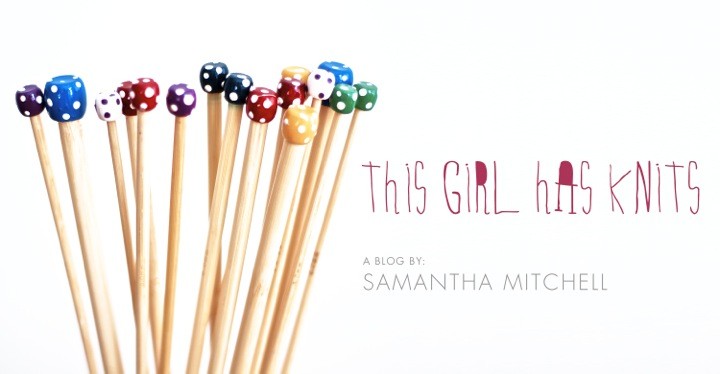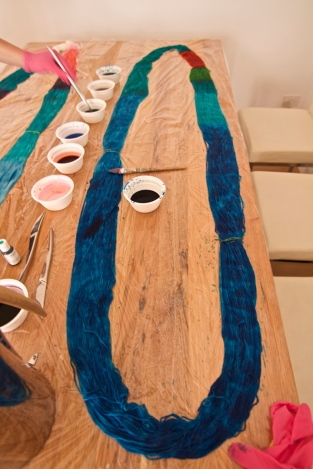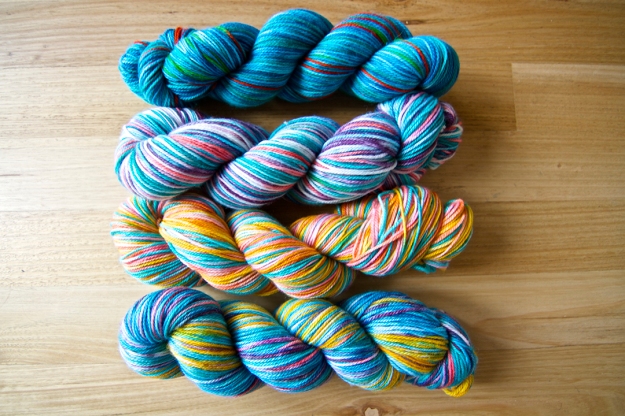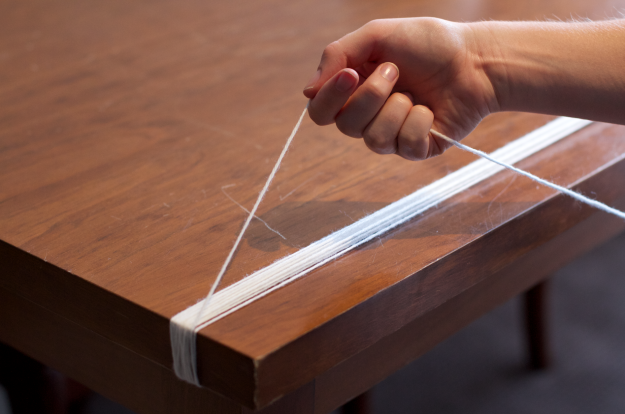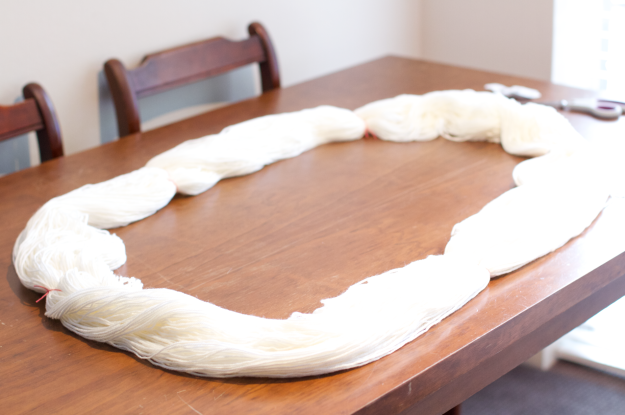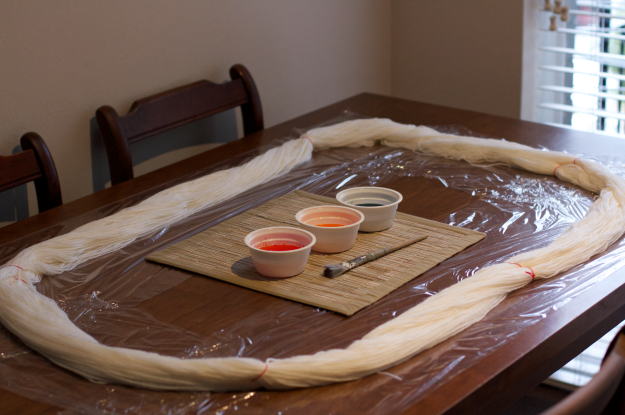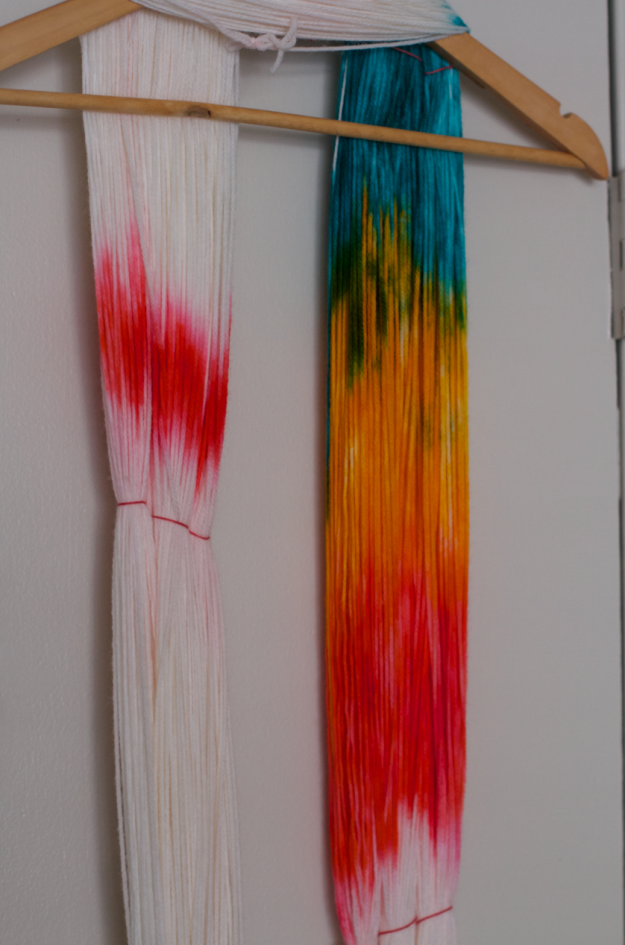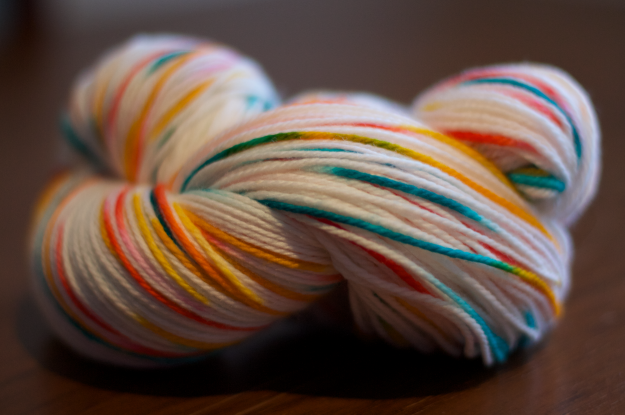Dying wool to your own specific colourway is so much fun, and it’s really easy! I love using food colouring to dye wool, and over the weekend, my friend Nyome and I had a blast doing just that! I’ve written posts on dying wool before, but I’ll outline the basics for you.
To get the best results, start with 100% wool. My #1 go-to wool is Bendigo Woollen Mills Luxury, in Frost. The balls are a missive 200g, and the wool is gorgeous and soft. Wind the ball into a skein (we used the edge of Nyome’s dining table!), and tie it off in at least 4 places. This will reduce the risk of the skein getting tangled (which is an utter nightmare!). Then, soak the wool in warm water, with a bit of white vinegar for half an hour. I added about 1 to 1.5 cups of vinegar to the water, but we were soaking 800g of wool in a massive sink!
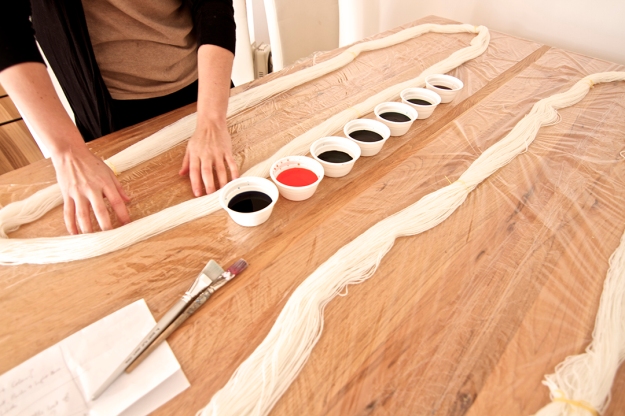 While the wool soaks, you can get started on your dyes. I like to use good quality gel food dye, which you can get some cooking supply stores. Put a small amount into a container (a little goes a long way!), add warm water, and stir to dissolve. The more water you add, the paler the colour will be. Grab your skein, and squeeze as much of the water out as you can. You want it damp, not dripping. Lay it out flat onto of some cling wrap.
While the wool soaks, you can get started on your dyes. I like to use good quality gel food dye, which you can get some cooking supply stores. Put a small amount into a container (a little goes a long way!), add warm water, and stir to dissolve. The more water you add, the paler the colour will be. Grab your skein, and squeeze as much of the water out as you can. You want it damp, not dripping. Lay it out flat onto of some cling wrap.
Now for the fun part! Paint your wool! There really isn’t any hard and fast technique to this, just apply the dye with a paint brush, and (using a gloved hand!) squish the dye into the layers of wool. Once one side is completely painted, you will have to carefully flip the skein and paint the underside.
When you’re happy with the skein, carefully wrap it up using the cling wrap that it was sitting on. You want to make a neat, tight little parcel. Pop the parcel into a slow cooker to set the dye. Mine has a little wire tray in it, so the cling wrap doesn’t sit directly on the pan. I also make sure to put about 1.5cm of water in the cooker, to make some lovely hot steam. Cook your wool for 1 hour on a high heat.
After an hour, carefully remove the parcel from the slow cooker, and let it cool down before you unwrap it. That parcel is going to be full of hot steam, which can give a really nasty burn, so please just be patient!
When it’s cool, unwrap it and give it a gentle wash in warm water with a bit of wool wash (or shampoo). There should be little to no dye coming out of that wool, which is exactly what you want. Rinse, squeeze out the excess water, and let it dry. Once it’s dry, you can rewind into different sized skeins, to really show off your colour choices!
This really is a lot of fun, and it’s so simple! Now I have to decide what to make with my fantastic wool!
